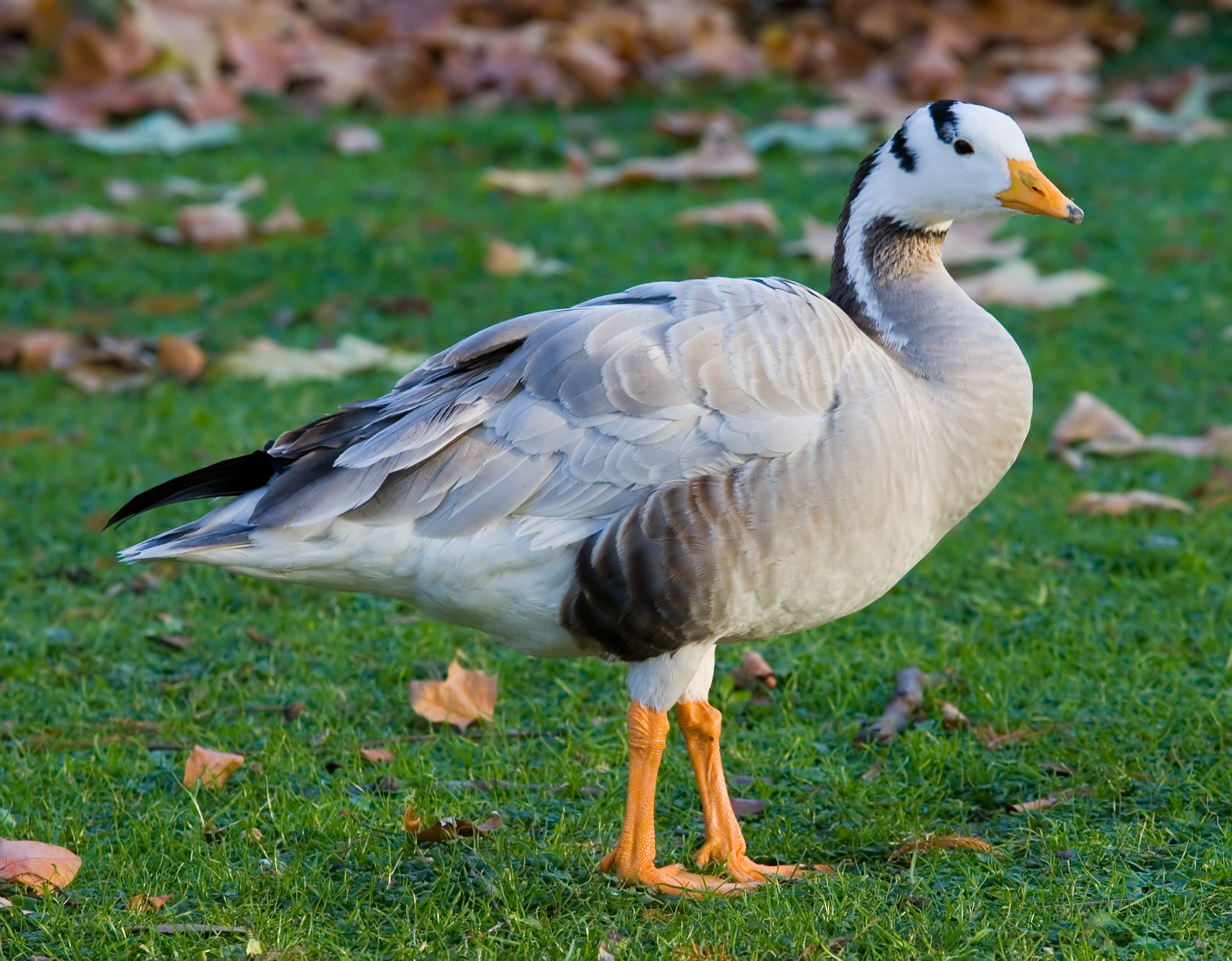- Bar-headed Goose
Taxobox
name = Bar-headed Goose
status = LC | status_system = IUCN3.1

image_width = 250px
regnum =Animal ia
phylum = Chordata
classis = Aves
ordo =Anseriformes
familia =Anatidae
genus = "Anser"
species = "A. indicus"
binomial = "Anser indicus"
binomial_authority = (Latham,1790 )
synonyms ="Eulabeia indica"The Bar-headed Goose ("Anser indicus") is agoose which breeds inCentral Asia in colonies of thousands near mountain lakes. It lays 3-8 eggs in a ground nest.Life and habitat
The summer habitat is high altitude lakes where the bird grazes on short grass. It suffers
predation from crows, foxes,raven s, sea eagles and others. The total population may, however, be increasing.The Bar-headed Goose migrates over the
Himalayas to spend thewinter inIndia ,Assam , NorthernBurma and the wetlands ofPakistan . It migrates up to Magadi wetlands of Gadag district of Karnataka in the southern part of India. The winter habitat of the Bar-headed Goose is on cultivation where it feeds on barley, rice and wheat, and may damage crops.The Bar-headed Goose is believed to be the highest flying bird having been seen at up to 10175 m (33,382 feet). It has a slightly larger wing area for its weight than other geese and it is believed this helps the goose to fly so high.
The bird is pale grey and is easily distinguished from any of the other grey geese of the genus "Anser" by the black bars on its head. It is also much paler than the other geese in this genus. In flight, its call is a typical goose honking. The adult is 71-76 cm (28-30 in) and weighs 1.87-3.2 kg (4-7 lbs).
It has sometimes been separated from "Anser", which has no other member indigenous to the Indian region, nor any at all to the Ethiopian, Australian, or Neotropical regions, and placed in the
monotypic genus "Eulabeia".The Bar-headed Goose is often kept in captivity as it is considered beautiful and breeds readily. Records in Britain are frequent, and almost certainly relate to escapes - however, the species has bred on several occasions in recent years and around five pairs were recorded in 2002 (the most recent available report of the Rare Birds Breeding Panel). It is possible the species is becoming gradually more established in the UK. The bird is sociable and causes no problems for other birds. The wild population is believed to be declining due to over-hunting.
Gallery
References
*IUCN2006|assessors=BirdLife International|year=2004|id=47146|title=Anser indicus|downloaded=11 May 2006 Database entry includes justification for why this species is of least concern
External links
* [http://www.waterfowl.org.uk/default.asp?bodypage=bar.html Bar-headed Goose]
Wikimedia Foundation. 2010.
